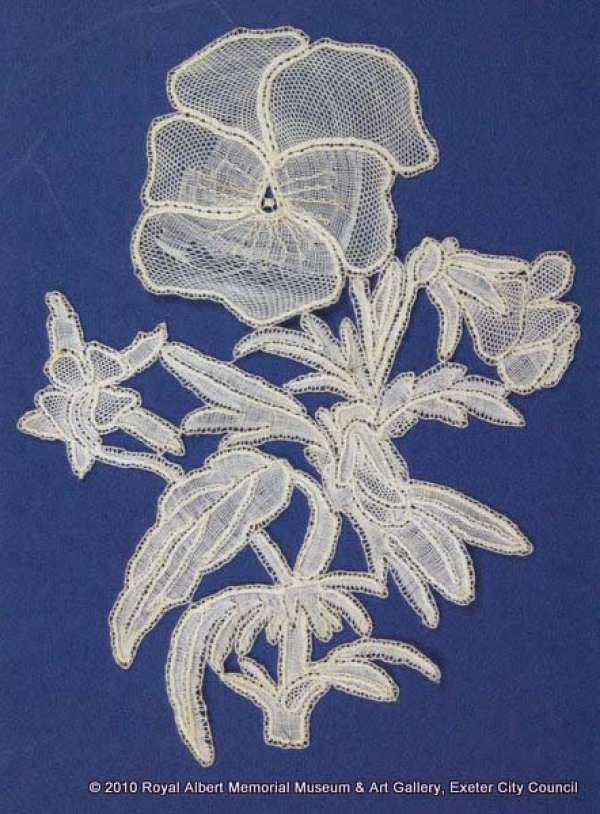Lace Sprig of a Pansy
by Ashley Eyvanaki
 Honiton (East Devon) lace sprig (RAMM Collections)
Honiton (East Devon) lace sprig (RAMM Collections)
Can you spot the lace sprig in the shape of a pansy? Made from delicate East Devon lace, this flower has been made with raised petals and veins, with a combination of whole and half stitches, to decorate a pillow. During the early twentieth century, many slang terms for gay men had botanical roots, such as ‘daisy’, ‘buttercup’, and particularly ‘pansy’. However, by the 1920s, the term ‘pansy’ was used as a derogative slur across America, against gay men who presented themselves as feminine or flamboyant.
In particular, the term ‘pansy’ was used prominently across New York during this period, a time labelled as the ‘pansy craze’ by historians such as George Chauncey. During the 1930s, many underground bars and nightclubs opened up across America to covertly combat the prohibition period. The entertainment provided at such establishments ranged from lesbian and gay artists to drag performers. As a result, these venues became a pivotal part of the ‘pansy craze’. In New York City, entire events were devoted to ‘female impersonators’, though they were soon shut down by the police. However, they acted as a precursor to drag queens and the drag scene that remains a cornerstone of queer culture even today. In fact, the Stonewall Riots of 1969 were led by self-identified drag queens, such as Marsha P. Johnson.
Contrastingly, during the ‘pansy craze’ period in Hollywood, there was much queer representation within the film industry, with LGBTQ+ performers having relative freedom behind the camera and onscreen. However, after the repeal of the prohibition this became less tolerated, and the sympathetic portrayal of queer characters was prohibited by the motion-picture production code from being included in Hollywood films.
Today, the term ‘pansy’ has been reclaimed and adapted for positive use by the LGBTQ+ community. Initiatives such as The Pansy Project aim to combat verbal and physical acts of homophobia by planting pansies at the sites of such crimes. Artist Paul Harfleet began this project by planting pansies in Manchester to mark his own experience of homophobia. This then grew into a larger network of pansies being planted on the behalf of others across the UK, and as part of different film festivals and events. This simple action turns an act of hatred into an act of nurturing love, reclaiming the term ‘pansy’ with a gesture of gentle resistance.
What do different flowers represent to you? Tell us in the comments below.
